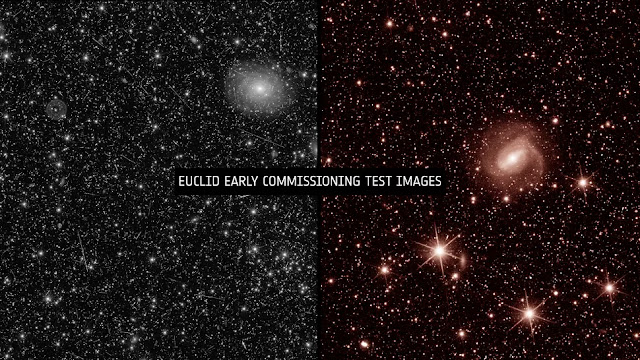The European Space Agency's (ESA) Euclid telescope, designed to map out the dark side of our universe, has sent its first images back to Earth.
The images confirm that the space observatory's instruments are functioning optimally. Euclid's mission is to analyze billions of galaxies residing up to about 10 billion light-years away, creating a 3D map that includes the element of time to show how those realms evolved in tandem with a maturing cosmos.
The images were captured using Euclid's Visible Instrument (VIS) and Near-Infrared Spectrometer and Photometer (NISP). VIS captures the universe through the part of the electromagnetic spectrum visible to human eyes, while NISP images galaxies in infrared light and measures precisely how much light each galaxy emits. The images include cosmic rays, a wealth of stars, and fuzzy blobs representing galaxies that Euclid will investigate further.
Euclid's mission is to help us understand the dark universe, which includes dark energy and dark matter. Dark energy is the "something" that seems to be accelerating the cosmic expansion, while dark matter is the unseeable "glue" that holds galaxies in place and dictates their arrangement. Euclid's detailed mapping of the universe over the next six years may provide clues about the nature of the dark universe.
The first images from Euclid mark the beginning of a new era in observational cosmology and statistical astronomy. As the mission progresses, the team behind Euclid is expected to reveal much about the 95% of the universe that we currently know so little about. The fully calibrated Euclid will ultimately observe billions of galaxies to create the biggest-ever 3D map of the sky.



Comments
Post a Comment